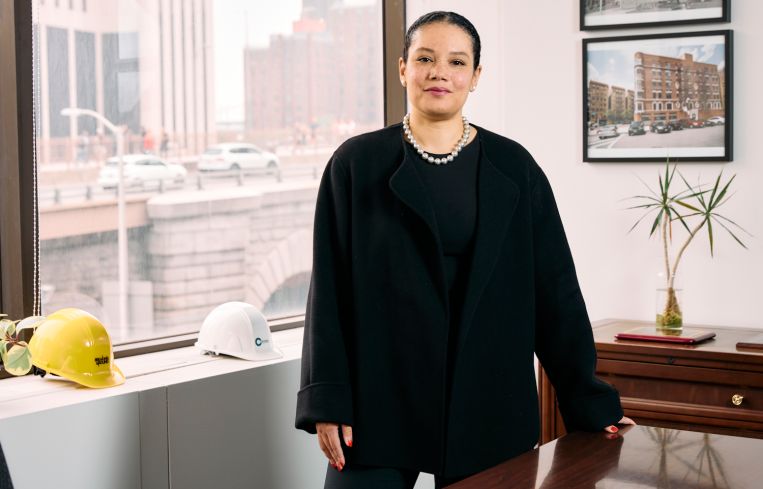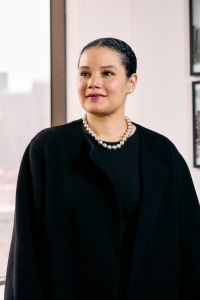New York City’s Daphne Rubin-Vega Is a Go-To Attorney on Housing Deals
The Department of Housing and Preservation Development’s deputy general counsel has risen through the municipal ranks
By Aaron Short May 27, 2025 8:35 am
reprints
New York has always revered its closers.
Mariano Rivera, the reliever who tallied 652 saves during his 17-year career en route to a unanimous Hall of Fame vote, is the most beloved (and feared) New York Yankee of the 21st century. Not to be outdone, pitcher Edwin Díaz enters the last inning of close games to an intimidating trumpet fanfare, much to the delight of Mets fans dreaming of playoff victories.
In the arts, Alec Baldwin’s line, “coffee’s for closers only” from his iconic monologue in David Mamet’s movie “Glengarry Glen Ross” encapsulated the high-pressure world of real estate sales and may well be the best acting of his career.
Then, there’s Daphne Rubin-Vega. The New York City Department of Housing Preservation and Development’s deputy general counsel has quietly built up a reputation in housing and finance circles as one of the agency’s best closers on complex affordable housing deals.
She oversees a team of 25 attorneys and works frequently with private lenders, Fannie Mae and Freddie Mac, other government agencies, commercial real estate developers and nonprofits to ensure the city’s projects have the necessary financing to proceed with shovels in the ground. Her office expects to close more than 100 financing deals, including 25 for entirely new residential buildings, between mid-March and the end of June.
“We do see ourselves as the most valuable player in the capital stack,” Rubin-Vega said. “We’re trying to make sure borrowers are financially stable. Otherwise, we jeopardize our affordable housing goals.”
Her secret? She seeks to iron out any outstanding snags, like old deed restrictions or building violations from other government agencies, before lenders approve the deal and release their financing.
But it’s rarely easy. A building could have violations from broken sidewalks that turn into liens, which can delay projects. Ongoing environmental issues and overdue water and sewage charges can delay financing, too. And, if the project is being built over a significant infrastructure space like a subway tunnel, engineers must be looped in to ensure that contractors use the right materials and install beams for the structure’s safety before the city can even issue permits.
That can mean years of preparation before the legal team gets to the table.
“Lenders are really coming in at the end, when everything has been tied up into a bow, but once something is on my desk, the plan is that we want to close it,” Rubin-Vega said. “We’re not looking to be the obstacle to something being realized. You have to be coordinated across agencies and internally to understand what’s going on.”
Rubin-Vega didn’t set out to become an attorney for a city agency, but she developed a nuanced understanding of how New York works while growing up in an Upper West Side co-op.
Her father, originally from Panama, grew up in the West Village, while her mother came to New York in the 1970s from the Dominican Republic. Rubin-Vega found herself paying attention to the different types of housing programs that existed in her neighborhood, including single-room occupancy housing, hotels for women and artists, New York City Housing Authority (NYCHA) complexes and her family’s own cooperative.
“Our co-op’s shareholders put their original sweat equity into the building, and to me it’s a beacon of what we want to see in the city, which is accessible housing for people to live in for generations and maintain at an affordable price,” she said.
After attending high school on the Upper East Side, she enrolled at Columbia University, then moved to Washington, D.C., for law school at Howard University. She graduated in 2012 and stayed in the capital for another four years to do environmental justice work and litigation.
During that time, Rubin-Vega frequently encountered land use and environmental review matters in her cases and decided she wanted to delve into them more. She moved back to New York and took a job in Bryan Cave’s land use practice in 2015. Soon, she was inspired by a presentation at a public hearing for then-Mayor Bill de Blasio’s housing plan and joined the Department of City Planning’s legal team.
“Public engagement is what attracted me to land use,” she said. “There’s a clear connection to community involvement in the development of their neighborhoods, along with the technical assistance and tools around the process, and how it works together to create the city that people want to live in.”
Rubin-Vega tackled neighborhood rezonings for Downtown Brooklyn and Midtown East, where she got up to speed on air rights laws and guided the department’s zoning division on what to include in new resolutions. In 2020, she moved over to NYCHA to assist with the agency’s passive house homeownership program that turned 13 dilapidated homes in South Jamaica, Queens, into 16 newly constructed affordable homes with rooftop solar panels and heat pumps.
Three years later, she joined the Department of Housing Preservation and Development (HPD) to focus on the agency’s new construction portfolio and ensure Mayor Eric Adams’s plan to create 500,000 new homes by 2032 remains on track. She was promoted to her current role in September of last year. Her colleagues, including acting HPD Commissioner Ahmed Tigani, say they appreciate Rubin-Vega’s ability to identify problems and find solutions — no matter how complex the issues appear.
“She brings a rare combination of calm and focus that makes her an invaluable presence in any room,” Tigani said. “She’s also a skilled consensus builder, earning equal respect both within our organization and among the many external stakeholders we work with on affordable housing deals.”
The deals have only become more complex in recent years. In the South Bronx, Rubin-Vega worked with city Economic Development Corporation officials and nonprofit Mutual Housing Association of New York to convert the former Spofford Juvenile Detention Center into a live-work campus with 740 units of 100 percent affordable housing and light industrial manufacturing space. Over in Brooklyn’s East Williamsburg, Rubin-Vega also resolved several different land use requirements on different lots of the site of the Greenpoint Hospital campus, enabling its conversion into a 200-bed shelter and 311 permanently affordable homes.

Then there’s The Lirio, a former Metropolitan Transportation Authority bus depot that has been fought over since the Bloomberg administration. In 2022, the City Council finally approved a plan led by developer Hudson Companies and nonprofit Housing Works to convert the parking lot into 112 homes for long-term survivors of HIV and AIDS. But the property also needed to incorporate enough space for the MTA to continue to operate its Rail Control Center.
The complexity of the transaction — which was structured as a master condominium that would allow the MTA to retain a condo unit that will be indentured into a master lease with the city — made some agency attorneys anxious.
But Rubin-Vega was able to smooth over discussions with lenders, City Hall, the city Law Department and MTA attorneys regarding the structure of the master lease and the right of reversion, which occurs when HPD disposes of sites to affordable housing developers. She ensured that all the requirements were met. The groundbreaking occurred in July, and the project is expected to be completed by 2026.
“There was a lot of hair on that deal,” Munsun Park, director of transactions for the MTA’s transit oriented development team, said. “There was a zoning lot merger, the retention of an easement, the master condominium structure — everything was thrown at it. She was wonderful. This could have been delayed and not built for years, but it happened.”
Rubin-Vega was happy to work on a project that allowed long-time New Yorkers to stay in the city she loves.
“It’s wonderful to have the city where I’m from also be my client,” Rubin-Vega said. “Every time I work on a project, I learn about an entirely new community I have no memories of in the city I’m from. I think that’s fascinating.”
CORRECTION: This article was updated to reflect when Rubin-Vega started at Bryan Cave and NYCHA.


